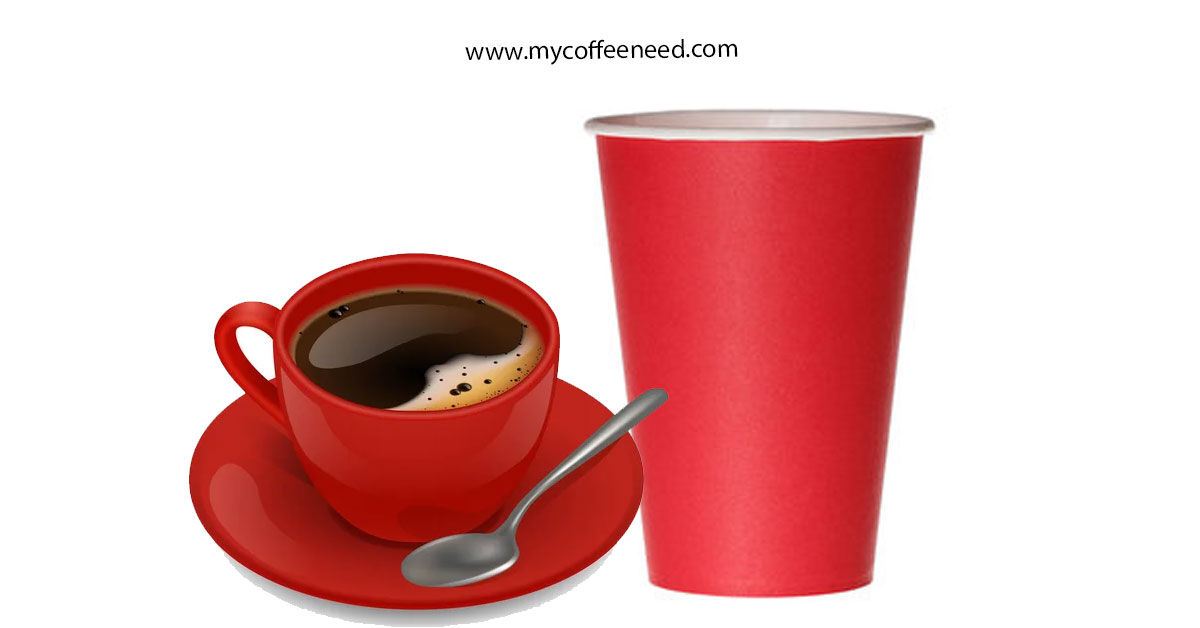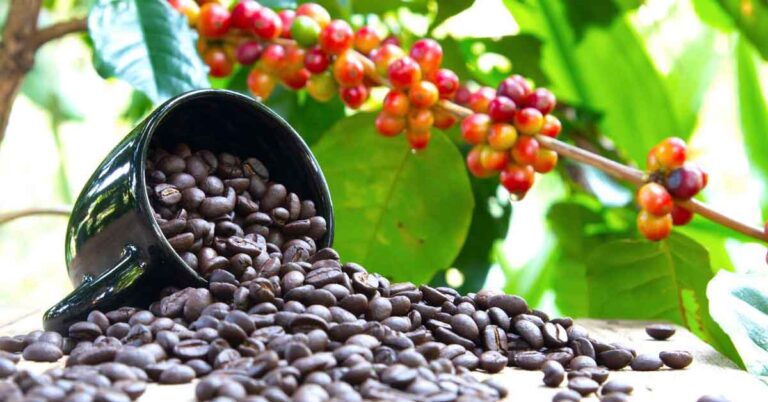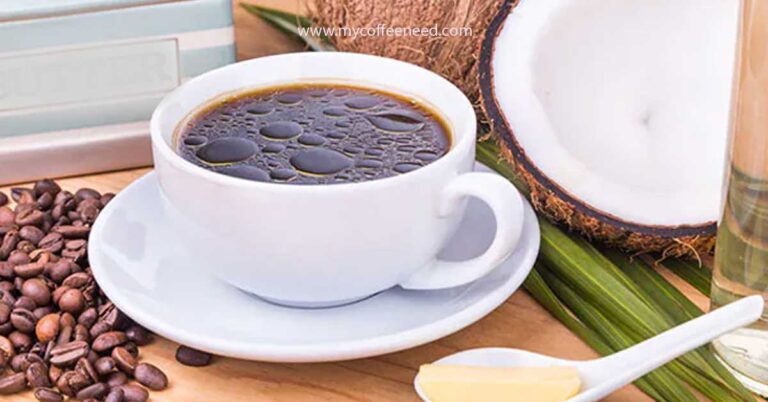Can You Put Hot Coffee in a Red Solo Cup
Everyone loves a good cup of coffee. Whether it’s the first thing you reach for in the morning, or your favorite midday pick-me-up, the warmth and flavor of this beloved beverage are universally recognized. But here comes the question that has been stirring debate in the United States and worldwide – can you put hot coffee in a red solo cup?
Known for their iconic presence at parties and gatherings, red solo cups have become a cultural symbol, typically filled with cold beverages. But what happens when you pour your favorite hot drink into this plastic vessel? This seemingly innocent act could bring in play factors such as heat loss, the type of plastic used, and potential health risks. Let’s delve deeper into the hot coffee-red solo cup equation to discover the truth.
Can You Put Hot Coffee in a Red Solo Cup?
Understanding Solo Cups
Solo cups, particularly the red ones, have a reputation as the party cup of choice in the United States. But these disposable cups are more than just an emblem of good times. Made primarily from plastic material such as polyvinyl chloride, they are designed to be durable and functional for a variety of cold drinks. But are they built to withstand the higher temperatures of hot coffee?
The Effect of Hot Coffee on Solo Cups
Pouring hot coffee into a red solo cup could lead to some concerns. When exposed to hot liquids, certain types of plastic may soften or warp, impacting not only the cup’s integrity but also potentially altering the coffee’s taste. It’s an important factor for every coffee lover to consider.
Furthermore, there’s a possibility that the heat could cause the plastic to release harmful chemicals like bisphenol A into your favorite hot beverage. However, these health risks are heavily dependent on the type of plastic and the exact temperature of the coffee. Let’s explore this further.
The Science Behind It?
Type of Plastic Used
Solo cups, like most disposable plastic cups, are primarily made of plastic material such as polystyrene. This type of plastic is generally safe for cold beverages and room temperature food items, but its safety for hot liquids like coffee is not as clear cut. While it doesn’t have a melting point as low as some plastics, exposing it to hot coffee could possibly result in the release of industrial chemicals such as styrene.
Response to High Temperatures
The potential problems arise when these cups are exposed to hot temperatures. While they are perfectly safe for cold drinks, the high temperatures from hot coffee or other hot beverages could cause the plastic to soften or even warp. This can make the cup unstable and potentially dangerous to handle.
Additionally, hot temperatures could potentially lead to the leaching of chemicals like bisphenol A into the drink. Although the exact level of risk is still the subject of ongoing research, it’s definitely something to consider before pouring your next hot cup of coffee into a red solo cup.
Health Implications
Chemicals Released
When a red solo cup is exposed to hot temperatures, there’s the potential for it to release chemicals. One such chemical is styrene, which is a component of polystyrene plastic. In large amounts, styrene is known to cause headaches, fatigue, and potential issues with the kidneys and respiratory system.
Another chemical to be aware of is bisphenol A, or BPA. This industrial chemical is often used in the production of certain plastics and resins, and it’s known to be able to seep into food or beverages when plastic containers made with BPA are heated.
Potential Health Risks
While occasional exposure to small amounts of these chemicals is generally considered safe, long-term or consistent exposure could potentially lead to health problems. For instance, some studies have linked high levels of BPA exposure to an increased risk of health issues, including heart disease, brain development problems in children, and hormonal disruptions.
As such, it’s crucial to consider these potential health risks when deciding whether to pour hot coffee or other hot beverages into a red solo cup. While the risk may be low for occasional use, consistent exposure could lead to health problems down the line.
Alternatives to Red Solo Cups
Pros and Cons of Alternatives
If you’re a coffee lover who enjoys hot beverages, there are plenty of safer and potentially more sustainable alternatives to red solo cups. Ceramic cups, glass mugs, and stainless steel cups, for example, are all excellent choices for hot coffee. They don’t pose the same potential health risks as plastic cups, and they’re often reusable, making them a more eco-friendly choice.
However, these options are not without their downsides. Glass and ceramic cups can be heavy and fragile, making them less suitable for use on-the-go. Stainless steel cups, while durable and portable, can sometimes alter the taste of the coffee.
Choosing the Right Cup
The best cup for your coffee ultimately depends on your specific needs and preferences. If you’re at home, a ceramic or glass mug is likely the best option, providing a good balance between safety and coffee taste. For on-the-go coffee drinkers, a travel mug or tumbler made of stainless steel or BPA-free plastic might be a better fit. They come with reclosable lids, offer great heat retention, and are generally safe for hot liquids.
In the end, it’s important to consider all these major factors when deciding where to pour your hot coffee. Whether it’s a solo cup, a ceramic mug, or a stainless steel tumbler, the best cup is the one that fits your lifestyle and ensures that you can enjoy your favorite hot beverage safely and deliciously.
The Coffee Experience
Taste Difference
Even if health risks aren’t your primary concern, the effect of the cup material on your coffee’s taste might be. Some coffee enthusiasts argue that plastic cups, such as the red solo cup, can subtly alter the taste of coffee, detracting from the full flavor experience. Glass, ceramic, and stainless steel cups, on the other hand, are generally considered to offer a purer, untainted coffee taste. While taste is subjective and can vary from person to person, this is a factor that could significantly impact your coffee experience.
Temperature Retention
The type of cup you use can also influence how long your coffee stays hot. Plastic cups, including red solo cups, are not particularly well known for their heat retention abilities. In contrast, ceramic, glass, and especially insulated stainless steel cups can keep your coffee hot for much longer. The better the temperature retention, the longer you can savor your hot coffee at its ideal temperature. So, if you want to enjoy your coffee hot for an extended period, a red solo cup might not be your best option.
The coffee experience is more than just a caffeine boost – it’s about savoring the flavor, aroma, and warmth of the drink. And the cup you choose to drink from plays an integral role in this experience.
Practical Considerations
Convenience Factor
Red solo cups, along with their plastic counterparts, offer a level of convenience that can be hard to beat. They are lightweight, disposable, and easy to handle, making them a popular choice for events and situations where washing up isn’t easy or practical. Additionally, they come in various sizes to accommodate different beverage quantities, further adding to their convenience.
However, when it comes to hot coffee, you might want to consider alternatives. Travel mugs, for example, are designed with convenience in mind. With features like reclosable lids and insulating materials, they can safely handle hot coffee and keep it hot for longer periods, all while being reusable and easy to carry around.
Environmental Impact
While red solo cups and other disposable plastic cups are convenient, their environmental impact can’t be ignored. These cups contribute to the growing problem of plastic waste. Even though they are recyclable, most often end up in landfills or the environment because recycling facilities may not accept them due to the type of plastic used.
Alternatives like ceramic mugs, glass cups, and stainless steel tumblers, while requiring resources to produce, are reusable and can last for many years, making them a more environmentally friendly option in the long run. Even disposable paper cups, though not perfect, have a lesser environmental impact than their plastic counterparts.
As our environmental consciousness grows, it’s becoming increasingly important to consider the environmental impact of our choices. While a red solo cup might seem like a small thing, the cumulative effect of these choices can be significant.
Conclusion: Your Coffee, Your Choice
Can you put hot coffee in a red solo cup? Technically, yes. But considering the potential health risks, the potential impact on taste, and the less-than-optimal heat retention, it might not be the best option for your favorite hot beverage.
There are plenty of alternatives out there that can enhance your coffee experience while keeping you safe and reducing your environmental impact. From ceramic mugs and glass cups for home use, to durable stainless steel travel mugs for on-the-go coffee drinking, there’s an option for every coffee lover.
It’s also worth considering the broader implications of our coffee cup choices. Every cup we use has an impact, from the potential health effects of chemical leaching to the environmental consequences of disposable cups. As coffee lovers, it’s our responsibility to make informed choices that allow us to enjoy our favorite beverage in a safe, sustainable way.
In the end, it’s your coffee, and your choice. So, choose wisely, and here’s to many more good times, great tastes, and memorable coffee moments.







